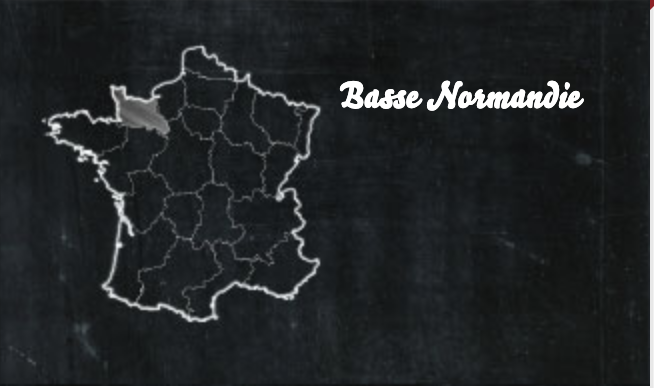Livarot, with its orange rind and spicy aroma, has the most pungent flavour of all Norman cheeses. Its name comes from the main town where it was commercialised the most and which defines its production area, the village of Livarot and its surrounding area. It is distinguishable by the five strips of sedge that are tied around it so that it maintains it shape during ageing. Made of reeds in olden times, and now made of paper, these five wrapped strips are what earned the cheese the nickname “Colonel”, as an analogy to the five-braid insignia for Colonels.
Livarot AOC

Origin
Characteristics
– AOC since 1975.
– Raw milk, soft washed-rind cheese.
– 40% minimum fat content.
– Cylinder weighing between 600 and 700 g, 12 cm in diameter, and 5-cm thick. Good Livarot must have a top and bottom that are flat and parallel. Under its smooth, shiny, reddish to dark brown rind, the cheese is uniform, soft, and flexible. It has a golden-yellow colour without any traces of white. Depending on its size, the cheese is called Livarot when it is 12 cm in diameter and is 5-cm thick, Trois-quarts Livarot when it is 10 cm in diameter, Petit-Livarot when it is 9 cm in diameter, and Quart-Livarot when it is 7 cm in diameter.
– Production: 1,400 tonnes.
Gastronomie
Livarot is above all a cheese for cheese plates that is sampled at the end of a meal and enjoyed with tannic or very robust Bordeaux, Burgundy, or Corbières wines, or even Norman-style with a bowl of cider. It is best enjoyed from late spring until winter. When Livarot is just right, it weighs on the tongue and melts in your mouth while releasing its spicy flavour. It is not used in any traditional recipes. However, it can be added to gnocchi or puff pastries.
Production
Five litres of milk are needed to produce one 12-cm wheel of Livarot. Traditional production occurs in two steps, which is rare for Norman cheeses. Fresh milk is skimmed at the farm, heated to 40°C, and then curdled by added rennet. Cut, mixed, and broken up after draining on canvas, the curd is stirred by hand and placed in moulds called “cliches” that are 15 cm in diameter and 15-cm thick.
Regularly turned and drained one last time, it is then taken to the market to be sold to a ripener.
After salting, the fresh cheese is placed in a drying room for about 10 days and then taken down to a damp cellar. Turned two or three times per week and occasionally rubbed with lightly salted water, it is smeared with annatto, a vegetable-based colouring that gives it its orange hue. Afterwards, it is wrapped with a spiral of thin strips of sedge, a wild reed that grows plentifully in the region’s swamps and ponds, so that it keeps its shape during ageing, which takes an additional three months.
Today, this technique has been simplified and the steps shortened. Ageing rarely takes longer than two months, and sedge has been replaced with paper. In order to comply with its legal definition, Livarot is commercially produced. The curd is obtained through renneting and rapid coagulation.
Livarot has been eaten in Paris since the end of the 17th century. Journalists called it “worker’s meat” because it was inexpensive and won people over with its original flavour, even though at the time it was a skimmed milk cheese. It was also said to have certain “envigorating qualities”. This was how Thomas Corneille described it in his dictionary, which was published in 1708. In the 19th century, it was the most well-known cheese from Normandy before been replaced by Camembert.
Between 1866 and 1877, its production doubled. In 1877, there were 200 ripeners for an operation producing more than 4 million cheeses.
Production Area
Originally from the Pays d’Auge, its production area remained confined to the few villages surrounding the village of Livarot, from which it was named. Previously a low-fat cheese made on farms, the AOC now requires the use of non-pasteurised milk and has restricted the production area to only the Pays d’Auge, which straddles the Calvados and Orne departments and is mainly located in the Viette and Vie valleys.